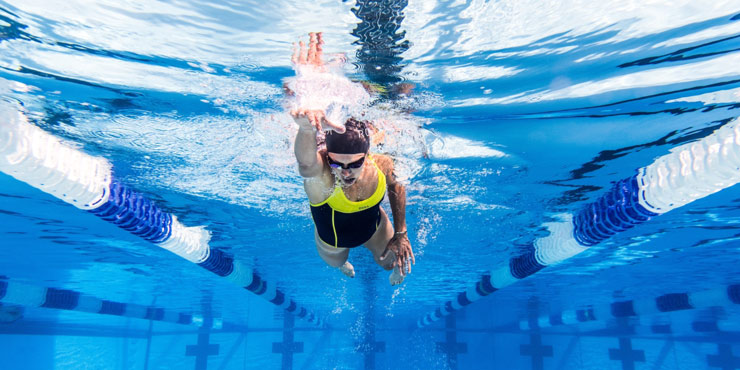Thousands of yards and hours of time put in, but yet you still can’t seem to improve your swim time. It can be very frustrating to work so hard at something and have very little to show for it. Here you will find the “secret sauce” on how to build your swim speed. Before we get into this, there are some pre-requisites for this formula:
- You already know how to swim
- Your technique is good – not perfect (no one is), but good
- Your schedule can accommodate a MINIMUM of 3 swims per week
- You have a watch or a clock where you can time yourself
- You are ready and want to commit to getting faster in the water
Have you met all those pre-requisites? If so, then this article is for you!
Once you’ve developed good swim technique, it’s then time to determine when you’ll swim and what those workouts will be. If you’re not able to join a masters swim team (which is recommended), then you’ll need some discipline and focus on how to properly prepare yourself for improvement.
A typical swimming week should include 3-4 workouts (more if you are still working on technique). The key is to swim a number of shorter workouts instead of just 1-2 long duration swims. The key to swimming is muscle memory which is better served by frequency vs. duration. In any given week, your workouts should include technique-, endurance- and threshold-focused workouts.
It is important to include quality swim sets at threshold pace or just below it. There are a couple of different ways to calculate your threshold pace. Threshold pace is referred to as “CSS” (Critical Swim Speed) or T-Pace (threshold pace). Ultimately, they mean the same thing and there are a few different ways to calculate this number. Depending on your swimming level, you can swim a 1000-yard time trial, 3 x 300 or 3 x 100. The goal is to go hard, but keep consistent. Your T-pace (also known as CSS) is very much like an LT (lactate threshold) test in biking or running. Do your swim, get the average time per 100, and there you have your T-pace. For example – if you do a 300 swim and the 100 times are 1:30, 1:34 and 1:40, then your average time is 1:35.
Once you have this CSS (T-pace), you can then use it to do zone training in the pool. Your sets will vary based on what the goal is for each workout. Just like HR zones on the run or power zones on the bike, you can use this T-pace to set time zones in the pool. It is important to schedule workouts that incorporate work in all zones (1-5), with the majority of that work being in zone 3 (aerobic pace) and zone 4 (tempo pace). The key is to work on sustained effort with short recovery periods. It is common for the first few intervals to feel “easy” but then gets tougher as the set goes on.
Swimming is a tough sport to master, but if you first focus on technique, then improve your speed and then add in the endurance, you will be on your way to finishing in the top percentile in your age group. If all of this sounds a little confusing and you’re looking for some direction in your swim training, please contact me. I can help walk you through it.
Train Right, Tri Right,
Coach MJ







